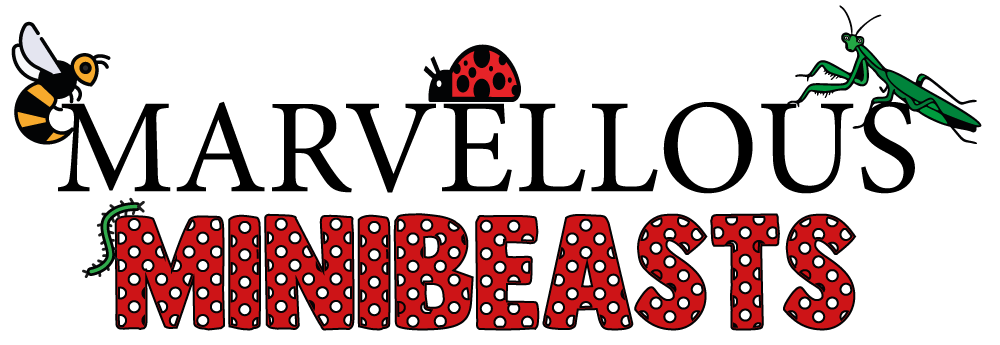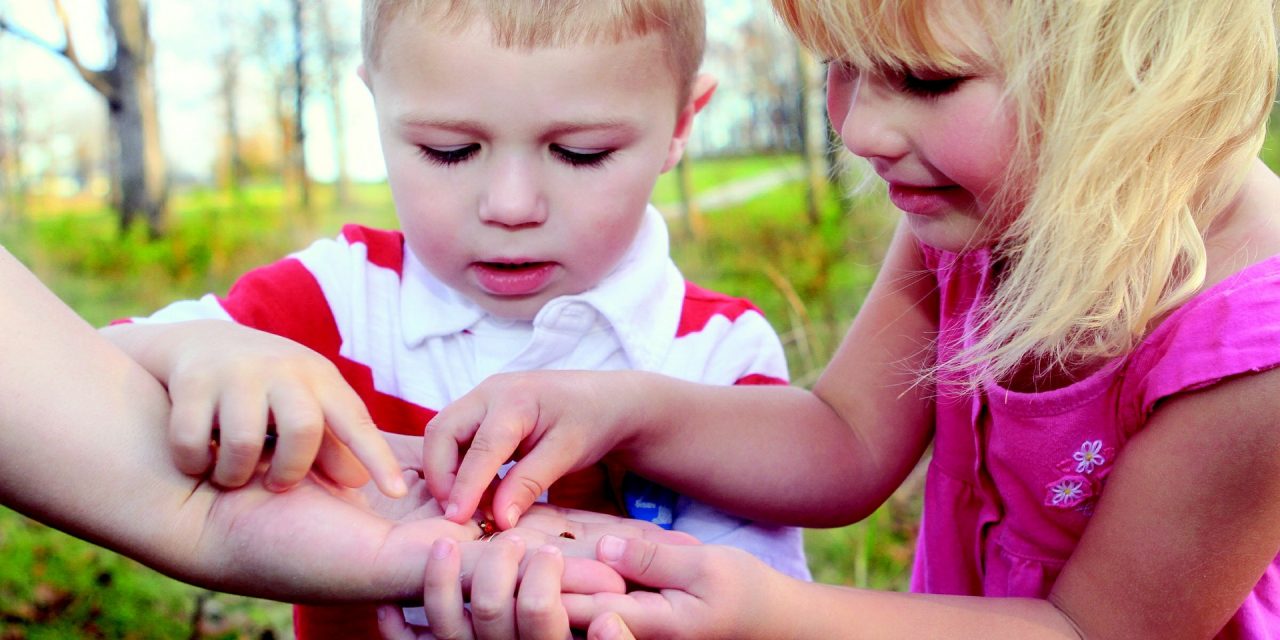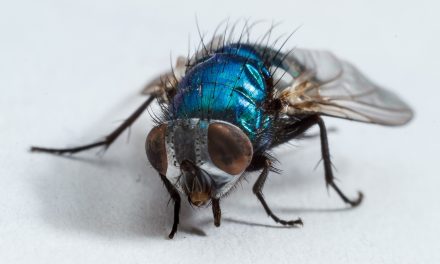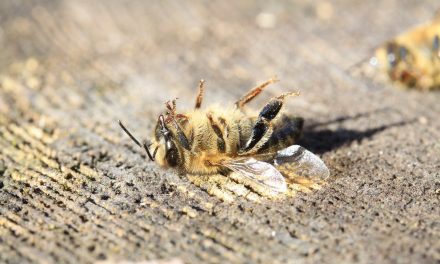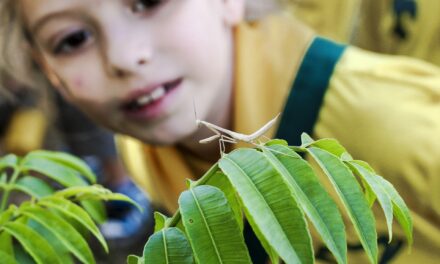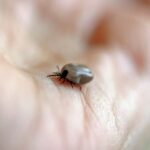Fear is a natural response to strange things. Kids can develop fears and phobias from something they have experienced, like a flying insect landing on them or a bee zipping past their face at high speed, and this is a normal bodily response. This article will help you to teach your children that they do not need to be afraid of flying insects or any other insects for that matter. So if you want to help your child overcome their fear of flying insects, keep reading.
How can I stop my child from being afraid of flying insects?
You can do a few things to stop your child from being afraid of flying insects; here are some ways you can help them.
Be brave – Even when we are fearful of something, we must keep our feelings hidden when trying to help our children overcome their fears. A lot of the time, children are afraid of things because we are. We are unknowingly passing our fears and phobias onto our children, especially when it comes to bugs and insects.
Phobias are an irrational response to a rational situation, and sometimes those responses can be so spontaneous that we cannot hide them from our children. Children are super sensitive to our feelings, and your phobia can unintentionally be transferred to them.
Children learn from us in so many ways, and if we show fear towards certain things, they will too. Your children need to know that they can trust you to keep them safe, and in the same way, they can pick up our fears; they can also pick up our bravery too; if you are brave and fearless, then your children will see that they do not need to be scared or fearful.
Research – introduce your child virtually to the insect they are afraid of. Show them that they do not need to be frightened. Often when we are fearful of something, it is because we do not know anything about it, which is entirely normal.
Help your child to see how interesting it is. Show them fun facts about the insect, for example;
- Where they live
- What they eat
- What they do for the ecosystem
- How they work
- What job they do
- Their life cycle
More often than not, giving them this information is enough for them not to be afraid anymore.
Never force them to confront the fear
It is essential that you do not use their fear of insects against them, never tease or taunt them and never force them to confront the fear by putting said insect in their face or forcing them to hold it when they are clearly fearful of it; this will only heighten the anxiety making it so much harder to break.
If you do happen to be in a situation where the insect they are afraid of is close to them or has landed on them, taking it out of your hands, then here are some things you can do to help.
Stand still – staying still in the same spot will help your child to see that there is no danger where they are, so they don’t need to run away. Comfort them by all means, but do it at your child’s level. Don’t pick them up or remove them from the situation; the insect will likely go about his business within a few seconds, which will help solidify that they didn’t need to run away.
It is essential to do this because you never know when a flying insect is likely to pay a visit; if your child is fearful and his first thought is to run away, they might put themselves in further danger by running into a busy road.
Make it less scary – Have you ever been in a situation where your child has fallen over, and to stop them thinking about the fact they fell over, you made a joke of it? Two of my daughters were very clumsy when they were toddlers and would often trip over or bump into something. We would laugh and say something like silly stone who put that there? or that tree really should watch where it is going, taking away from the fact they had just fallen over and hurt themselves. You can do the same with insects and turn it from a scary experience into a fun one. Children don’t forget easily, and who knows, the next time you encounter the same insect, they may remember what you said and say the same taking away the fear.
Compare size – show your children that the insect has more to fear from you than you do of them. Tell them how big they are compared to how tiny the insect is. As far as the insect is concerned, you are a giant; ask them who is bigger and stronger and then ask them who should be afraid? When a child can think rationally, the fear will usually become an afterthought.
Teach them about all the things the insect needs to be scared about to be able to survive,
- Being stepped on
- Predators
- Spider webs
If your child thinks the insect should be scared of them and not the other way around, they are more likely to accept them. This is an excellent time to talk about defences that insects may have and why they would use them if they can understand why they might be more accepting of them. Tread carefully at this point overemphasise that they only use defences if they feel threatened or scared, just like them when they were frightened.
Do they have a favourite insect?
If they have a favourite insect like a ladybug or a butterfly, you can use this to help them overcome their fear. Butterflies are harmless, and you can find them in most places that have lots of flowers. Butterflies don’t tend to interact with people, making them a great insect to see outdoors that can be explored at a distance without causing too much stress to your child. Patience is vital; let them go at their own pace. With lots of love and support, you will be surprised by how accepting your children can be.
Positive insect interactions
My daughter’s love of insects came from watching Peppa pig when she was little. Peppa found a spider and named him Mr skinny legs. My daughter came in from the garden holding a giant spider, asking can we keep him as a pet? When I told her to return him to the garden, she was heartbroken. She was gifted a tarantula for Christmas that year, and she named him Mr skinny legs! Her love of insects and creepy crawlies grew from there.
She has never been afraid of anything, she’s the first one there rescuing worms stuck on the concrete surface or relocating spiders when they find their way inside, but I wonder if she hadn’t watched those episodes, would she still have a love for all things crawly? Being as Peppa pig had a significant impact on her; I wonder if introducing small children to these positive interactions in books or movies might also help them be more accepting of them.
Fear of being bitten by an insect
We all have an underlying fear of being bitten by an insect, but there are many other things like falling over or bumping into something that may hurt equally as a bite or sting from an insect. Still, we don’t stop doing what we want to do for fear of falling over or bumping into something, so why should we let our fear of being bitten stop us?
The final step to conquering a fear
The final step to conquering a flying insect’s fear is to be around them. This step needs to be done entirely when the child is happy and comfortable and shows an eagerness to participate. Ask them if they would like to hold an insect; if not, you can hold it for them. Once they have seen you holding it and nothing bad happening to you, they are more likely to want to hold it too.
When to seek help
Most phobias are fear-based; if this is not caught early, it can start to become a problem that not only affects the child with the fear but it can begin to impact the whole family negatively. If the child begins to distance themselves from certain situations or are unable to do things normally without fear, it is time to seek professional help. Often someone with experience in these situations can help the child overcome the fear, but it can take lots of time and patience.
